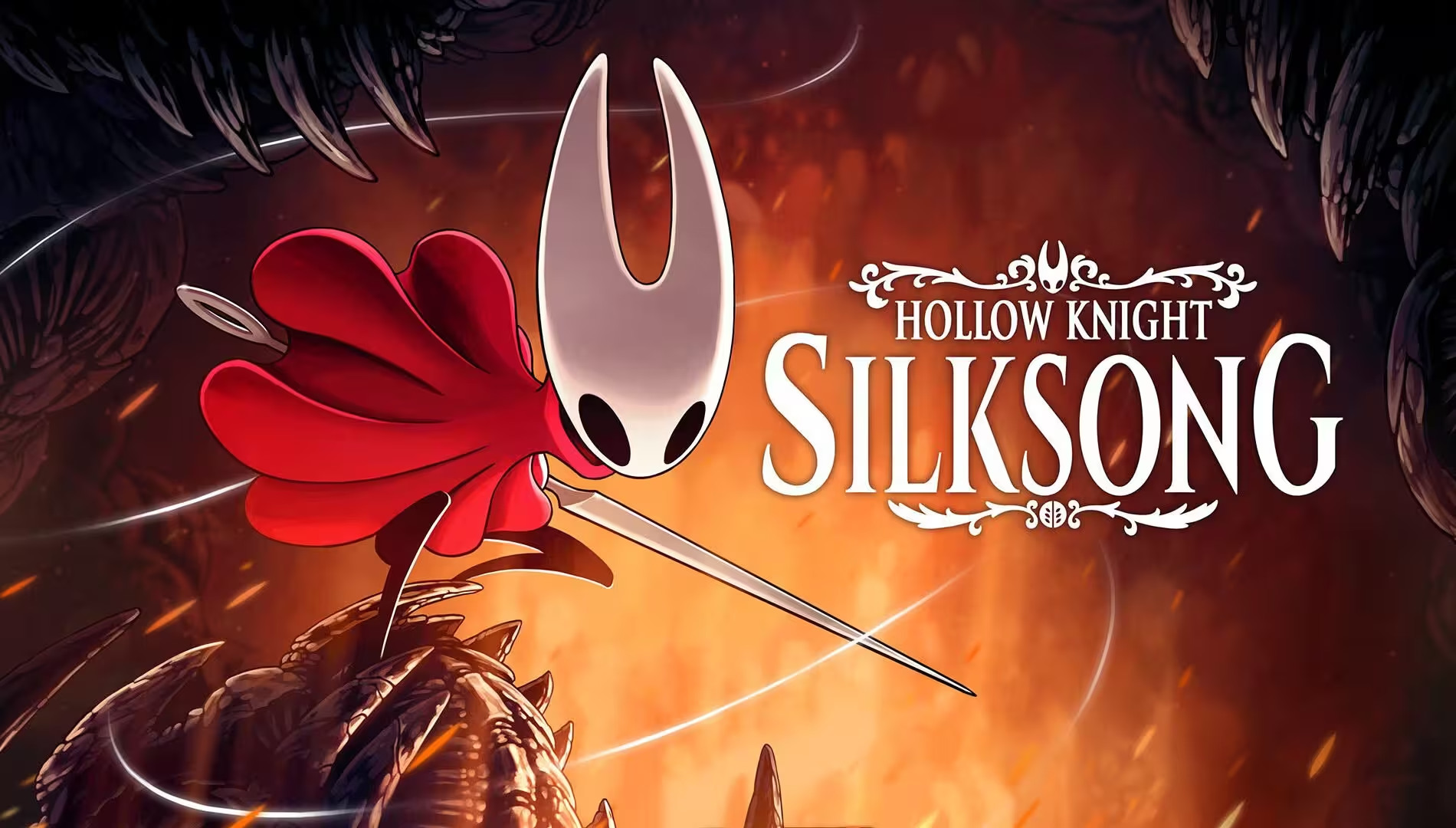Hollow Knight: Silksong Review
It’s finally here. Hollow Knight: Silksong drops you into Pharloom, and Hornet isn’t messing around. Forget Hallownest’s slow crawl — this time you’re fast, lethal, and climbing through a kingdom that doesn’t forgive mistakes.
If you loved the first game, you know what’s coming: precise combat, punishing bosses, and a world that grips you and won’t let go. New to the series? Hornet’s journey is a masterclass in metroidvania design, where skill, curiosity, and a bit of stubbornness are your best friends.
This isn’t just another Hollow Knight. It’s Hornet’s story. It’s harder. It’s faster. And it’s unforgettable.
Getting to Know Hornet
Hornet starts her journey at the bottom of Pharloom, and she’s immediately a step ahead of the Vessel you played in the first game. Agile, fast, and equipped with a range of acrobatic moves, Hornet transforms platforming and combat into a fluid dance of risk and reward.

- Traversal moves include double jumps, wall jumps, grappling hooks, sprinting, and gliding. Each new ability makes exploration feel fresh and opens up areas previously unreachable.
- Platforming design is challenging but fair. Pharloom is industrialized compared to Hallownest, with factories, towers, and traps that demand precision — yet Hornet’s mobility makes even the trickiest sequences satisfying.
Exploration is rewarded. Hidden rooms, optional bosses, and secret side quests keep curiosity alive. And unlike Hollow Knight, Silksong’s structured quest system ensures you rarely feel lost, with waypoints and quest boards guiding progression. For more info on Hornet’s abilities and upgrades, check out Team Cherry’s official site.
Combat That Demands Skill
Silksong’s combat is faster and more aggressive than its predecessor. Hornet is a predator: you strike, dodge, and weave your way through enemies, all while managing silk to heal and power up your strongest attacks.

- Boss fights are tense and strategic. Humanoid bosses emulate fencing duels, while larger, chaotic encounters test reflexes and patience.
- Enemy design escalates in difficulty. Early-game foes like Lace teach you timing, while later bosses require precise builds with optional charms and crests.
- Optional equipment like the Magma Bell or Reaper Crest drastically change combat strategies, rewarding exploration.
Unlike Hollow Knight, Silksong encourages offensive play. Hornet can’t tank hits like the Vessel; you need to move, strike, and retreat strategically. Every skirmish feels like a dance choreographed to the haunting, orchestral soundtrack. You can listen to the official Silksong soundtrack on YouTube to feel the intensity in action.
Story and Characters
Hornet finally gets her story told. Unlike the silent Vessel, Hornet has a voice, a past, and a purpose. Captured and brought to Pharloom, she must climb from the bottom to confront her captors and uncover the kingdom’s secrets.

- Character-driven narrative: Hornet’s journey is not just survival. Her leadership, heritage as part of the Weavers, and uncompromising morals shape Pharloom’s story.
- Side quests are meaningful. They reveal hidden lore, expand the world, and reward curiosity. Act III, in particular, shows the depth of Hornet’s influence on her environment and allies.
- The stakes: Pharloom needs a hero capable of action and strategy. Hornet’s independence and intelligence make her that hero, in contrast to the Vessel’s passive journey in Hollow Knight.
For lore connections and deeper context, the Hollow Knight Fandom Wiki is an excellent resource.
Visuals and Sound
Silksong is stunning. Team Cherry’s hand-drawn art creates a world that’s both industrial and alive. Every area — from mines to cities — feels distinct, with intricate details that reward exploration.
The soundtrack deserves special mention. Composed by Christopher Larkin, each track adapts dynamically to combat and exploration, amplifying tension during boss fights and setting a serene tone in quieter areas. The official soundtrack brings every area to life, and it’s worth a listen even outside gameplay.
Challenge and Replayability
Silksong is challenging without being unfair. Bosses can hit hard, and large areas with fewer benches make deaths more consequential. But optional charms, crests, and tools let players tweak difficulty.
Replay value is high:
- Experiment with different loadouts
- Hunt optional bosses and secret rooms
- Collect all charms and upgrade Hornet’s abilities
- Discover lore hidden in side quests and environments
For broader community feedback and ratings, check out Metacritic’s Silksong page.
Pros and Cons of Hollow Knight: Silksong
Pros:
- Fluid, fast-paced combat and platforming
- Hornet’s moves make traversal satisfying and empowering
- Gorgeous hand-drawn visuals and immersive soundtrack
- Structured quest system balances guidance with exploration
- Rich backstory and character-driven narrative
Cons:
- Boss difficulty spikes without proper equipment
- Optional secrets and charms are easy to miss
- Some traversal sections require repeated paths, which may frustrate casual players
Related Reviews
For more metroidvania and action-adventure coverage:
- Ghost of Yotei Review
- Silent Hill F Review
- Fatal Fury: City of Wolves Review
- Wuchang: Fallen Feathers Review
- Fire Emblem: Shadows Review
Final Verdict
Hollow Knight: Silksong isn’t just a sequel — it’s a masterclass in evolution. Team Cherry takes everything that worked in Hollow Knight and refines it: faster combat, satisfying platforming, and a protagonist with depth and personality. Pharloom is a kingdom that punishes mistakes but rewards curiosity, skill, and creativity. Hornet’s journey is essential for any metroidvania fan, and for those who love the first game, Silksong doesn’t just meet expectations — it exceeds them.
Whether you’re exploring the official Team Cherry site, hunting every charm, or replaying boss fights to perfection, Silksong proves one thing: the world of bugs still has plenty to teach us.

